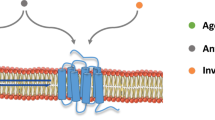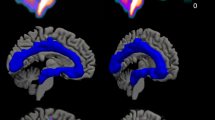Summary
Suicide has been associated with decreased serotonin transmission. Measurement of concentrations of serotonin, its precursors tryptophan (TRY) and 5-hydroxytryptophan (5-HTP) and its metabolite 5-hydroxyindoleacetic acid (5-HIAA), have been used as indices of serotonin activity, and with serotonin transporter binding, are indices of the integrity of serotonin nerve terminals. Most previous studies have not distinguished high affinity transporter binding from a very similar nontransporter binding site, where binding is not dependent on Na+ or Cl− and that does not have a known functional role. We therefore, assayed binding kinetics in prefrontal (PFC) and temporal cortex (TC) in matched pairs of suicide victims and controls using the selective ligand3H-paroxetine, and employing 1 μM sertraline to define specific binding to the transporter and 10 μM sertraline which also displaces binding to the high affinity, nontransporter site. In addition, we measured concentrations of TRY, 5-HTP, serotonin and 5-HIAA in the same brain areas. The total number of3H-paroxetine transporter and nontransporter binding sites (Bmax), was lower in the suicide group compared to controls in both Brodmann area 9 (prefrontal cortex; p=0.02) and in Brodmann area 38 (temporal cortex, p=0.01). In contrast, no differences were found in the number of high affinity transporter binding sites and concentrations of serotonin, 5-HIAA, 5-HTP or TRY (p > 0.05). We conclude that the number of serotonin transporter sites is not altered in Brodmann area 9 in suicide, and that fewer3H-paroxetine and3H-imipramine binding sites found in this region of cerebral cortex of suicides may be explained by a reduction in the nontransporter binding sites.
Similar content being viewed by others
References
Arango V, Mann JJ (1992) Relevance of serotonergic postmortem studies to suicidal behavior. Int Rev Psychiatry 4: 131–140
Arango V, Ernsberger P, Marzuk PM, Chen J-S, Tierney H, Stanley M, Reis DJ, Mann JJ (1990) Autoradiographic demonstration of increased serotonin 5-HT2 and β-adrenergic receptor binding sites in the brain of suicide victims. Arch Gen Psychiatry 47: 1038–1047
Arango V, Underwood MD, Gubbi AV, Mann JJ (1995) Localized alterations in pre- and postsynaptic serotonin binding sites in the ventrolateral prefrontal cortex of suicide victims. Brain Res 688: 121–133
Arató M, Tekes K, Palkovits M, Demeter E, Falus A (1987) Serotonergic split brain and suicide. Psychiatry Res 21: 355–356
Arató M, Tekes K, Tóthfalusi L, Magyar K, Palkovits M, Frecska E, Falus A, MacCrimmon DJ (1991) Reversed hemispheric asymmetry of imipramine binding in suicide victims. Biol Psychiatry 29: 699–702
Arora RC, Meltzer HY (1989)3H-imipramine binding in the frontal cortex of suicides. Psychiatry Res 30: 125–135
Arora RC, Meltzer HY (1991) Laterality and3H-imipramine binding: studies in the frontal cortex of normal controls and suicide victims. Biol Psychiatry 29: 1016–1022
Åsberg M, Nordström P, Träskman-Bendz L (1986) Cerebrospinal fluid studies in suicide. An overview. Ann NY Acad Sci 487: 243–255
Bäckström IT, Marcusson JO (1987) 5-Hydroxytryptamine-sensitive [3H]imipramine binding of protein nature in the human brain. I. Characteristics. Brain Res 425: 128–136
Bäckström I, Bergström M, Marcusson J (1989) High affinity [3H]paroxetine binding to serotonin uptake sites in human brain tissue. Brain Res 486: 261–268
Beskow J, Gottfries CG, Roos BE, Winblad B (1976) Determination of monoamine and monoamine metabolites in the human brain: post mortem studies in a group of suicides and in a control group. Acta Psychiatr Scand 53: 7–20
Bourne HR, Bunney WEJ, Colburn RW, Davis JM, Shaw DM, Coppen AJ (1968) Noradrenaline, 5-hydroxytryptamine, and 5-hydroxyindoleacetic acid in hindbrains of suicidal patients. Lancet ii: 805–808
Cheetham SC, Crompton MR, Czudek, C, Horton RW, Katona CLE, Reynolds GP (1989) Serotonin concentrations and turnover in brains of depressed suicides. Brain Res 502: 332–340
Cochran E, Robins E, Grote S (1976) Regional serotonin levels in brain: a comparison of depressive suicides and alcoholic suicides with controls. Biol Psychiatry 11: 283–294
Crow TJ, Cross AJ, Cooper SJ, Deakin JFW, Ferrier IN, Johnson JA, Joseph MH, Owen F, Poulter M, Lofthouse R, et al (1984) Neurotransmitter receptors and monoamine metabolites in the brains of patients with Alzheimer-type dementia and depression, and suicides. Neuropharmacology 23: 1561–1569
D'Amato RJ, Largent BL, Snowman AM, Snyder SH (1987) Selective labeling of serotonin uptake sites in rat brain by [3H]citalopram contrasted to labeling of multiple sites by [3H]imipramine. J Pharmacol Exp Ther 242: 364–371
Ferrier IN, McKeith IG, Cross AJ, Perry EK, Candy JM, Perry RH (1986) Postmortem neurochemical studies in depression. Ann NY Acad Sci 487: 128–142
Gross-Isseroff R, Israeli M, Biegon A (1989) Autoradiographic analysis of tritiated imipramine binding in the human brain post mortem: effects of suicide. Arch Gen Psychiatry 46: 237–241
Habert E, Graham D, Tahraoui L, Claustre Y, Langer SZ (1985) Characterization of3H-paroxetine binding to rat cortical membranes. Eur J Pharmacol 118: 107–114
Hrdina PD, Demeter E, Vu TB, Sótóyni P, Palkovits M (1993) 5-HT uptake sites and 5-HT2 receptors in brain of antidepressant-free suicide victims/depressives: increase in 5-HT2 sites in cortex and amygdala. Brain Res 614: 37–44
Korpi ER, Kleinman J, Goodman SI, Phillips I, DeLisi LE, Linnoila M, Wyatt RJ (1986) Serotonin and 5-hydroxyindoleacetic acid in brains of suicide victims. Comparison in chronic schizophrenic patients with suicide as cause of death. Arch Gen Psychiatry 43: 594–600
Langer SZ, Moret C, Raisman R, Dubocovich ML, Briley M (1980) High-affinity [3H]imipramine binding in rat hypothalamus: association with uptake of serotonin but not of norepinephrine. Science 210: 1133–1135
Laruelle M, Vanisberg MA, Maloteaux JM (1988) Regional and subcellular localization in human brain of [3H]paroxetine binding, a marker of serotonin-uptake sites. Biol Psychiatry 24: 299–309
Laruelle M, Abi-Dargham A, Casanova MF, Toti R, Weinberger DR, Kleinman JE (1993) Selective abnormalities of prefrontal serotonergic receptors in schizophrenia: a postmortem study. Arch Gen Psychiatry 50: 810–818
Lawrence KM, De Paermentier F, Cheetham SC, Crompton MR, Katona CLE, Horton RW (1990a) Symmetrical hemispheric distribution of3H-paroxetine binding sites in postmortem human brain from controls and suicides. Biol Psychiatry 28: 544–546
Lawrence KM, De Paermentier F, Cheetham SC, Crompton MR, Katona CLE, Horton RW (1990b) Brain 5-HT uptake sites, labelled with [3H]paroxetine, in antidepressant-free depressed suicides. Brain Res 526: 17–22
Lloyd KG, Farley IJ, Deck JHN, Hornykiewicz O (1974) Serotonin and 5-hydroxyindoleacetic acid in discrete areas of the brainstem of suicide victims and control patients. Adv Biochem Psychopharmacol 11: 387–397
Lowry OH, Rosenbrough NJ, Farr AL, Randall RJ (1951) Protein measurement with the folin phenol reagent. J Biol Chem 193: 265–275
Mann JJ, Stanley M (eds) (1986) Psychobiology of suicidal behavior. The New York Academy of Sciences, New York
Mann JJ, Arango V, Marzuk PM, Theccanat S, Reis DJ (1989) Evidence for the 5-HT hypothesis of suicide: a review of post-mortem studies. Br J Psychiatry 155 [Suppl 8]: 7–14
Mann JJ, McBride PA, Brown RP, Linnoila M, Leon AC, DeMeo MD, Mieczkowski TA, Myers JE, Stanley M (1992) Relationship between central and peripheral serotonin indexes in depressed and suicidal psychiatric inpatients. Arch Gen Psychiatry 49(6): 442–446
McPherson GA (1985) Analysis of radioligand binding experiments: a collection of computer programs for the IBM PC. J Pharmacol Meth 14: 213–228
Meyerson LR, Wennogle LP, Abel MS, Coupet J, Lippa AS, Rauh CE, Beer B (1982) Human brain receptor alterations in suicide victims. Pharmacol Biochem Behav 17: 159–163
Munson PJ, Rodbard D (1980) LIGAND: a versatile computerized approach for characterization of ligand-binding systems. Anal Biochem 107: 220–239
Owen F, Cross AJ, Crow TJ, Deakin JFW, Ferrier IN, Lofthouse R, Poulter M (1983) Brain 5-HT2 receptors and suicide. Lancet ii: 1256
Owen F, Chambers DR, Cooper SJ, Crow TJ, Johnson JA, Lofthouse R, Poulter M (1986) Serotonergic mechanisms in brains of suicide victims. Brain Res 362: 185–188
Pare CMB, Yeung DPH, Price K, Stacey RS (1969) 5-Hydroxytryptamine, noradrenaline, and dopamine in brainstem, hypothalamus, and caudate nucleus of controls and of patients committing suicide by coal-gas poisoning. Lancet ii: 133–135
Paul SM, Rehavi M, Skolnick P et al (1984) High affinity binding of antidepressants to a biogenic amine transport site in human brain and platelet; studies in depression. In: Post RM, Bellinger CJ (eds) Neurobiology of mood disorders. Williams and Wilkins, Baltimore, pp 846–853
Schaechter JD, Wurtman RJ (1990) Serotonin release varies with brain tryptophan levels. Brain Res 532: 203–210
Shaw DM, Camps FE, Eccleston EG (1967) 5-Hydroxytryptamine in the hind-brain of depressive suicides. Br J Psychiatry 113: 1407–1411
Stanley M, Virgilio J, Gershon S (1982) Tritiated imipramine binding sites are decreased in the frontal cortex of suicides. Science 216: 1337–1339
Stanley M, Mann JJ, Gershon S (1983) Alterations in pre- and postsynaptic serotonergic neurons in suicide victims. Psychopharmacol Bull 19: 684–687
Author information
Authors and Affiliations
Rights and permissions
About this article
Cite this article
Mann, J.J., Henteleff, R.A., Lagattuta, T.F. et al. Lower3H-paroxetine binding in cerebral cortex of suicide victims is partly due to fewer high affinity, non-transporter sites. J. Neural Transmission 103, 1337–1350 (1996). https://doi.org/10.1007/BF01271194
Received:
Accepted:
Issue Date:
DOI: https://doi.org/10.1007/BF01271194




